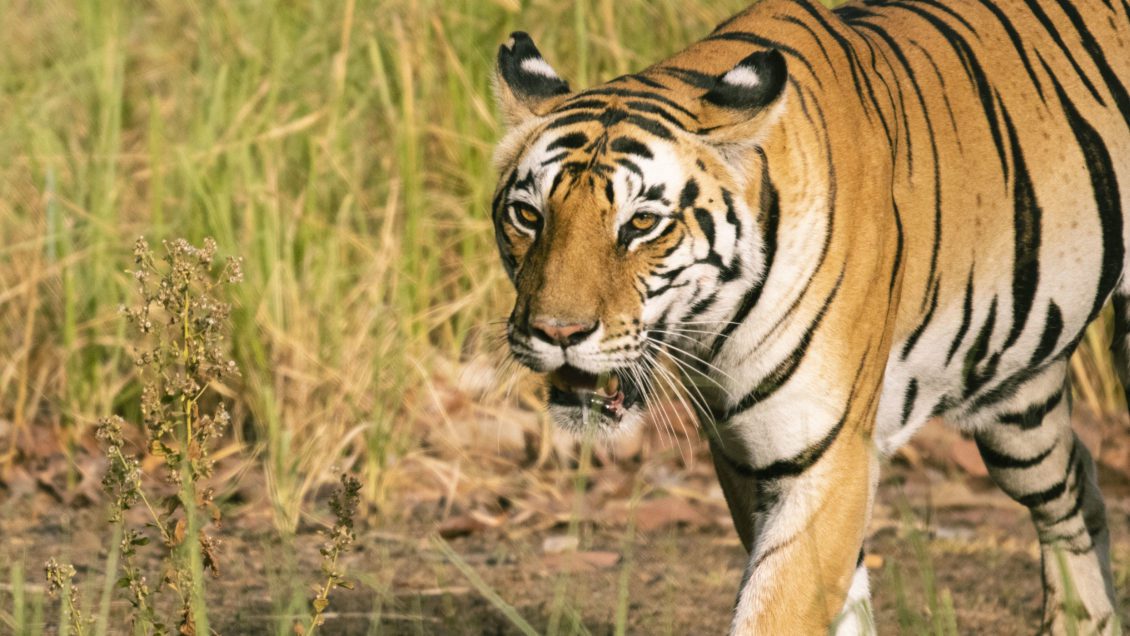When it comes to tiger conservation, Clemson University has a long history of trying to save its mascot from extinction. The number of tigers left in the wild is roughly equal to Clemson’s incoming class of first-year students. With an estimated less than 4,000 tigers left, the species is classified as “Endangered” on the International Union for the Conservation of Nature (IUCN) Red List of Threatened Species. Some sub-species, like the Malayan and Sumatran tigers, are classified as “Critically Endangered.”
The number of tigers left in the wild is roughly equal to Clemson’s incoming class of first-year students.
India, where around seventy percent of the world’s wild tiger population roams, has become a second (and often, first) home to researchers working in the field with this apex species. This summer, University faculty and students from a variety of fields visited India to engage around the interdisciplinary nature of tiger conservation efforts across the country.
Post-doctoral researcher, Jeremy Dertien, Ph.D., has been working with Robert Baldwin, Ph.D., Clemson professor and endowed chair of conservation, and RESOLVE to implement a system of artificially intelligent trail cameras in the Kanha-Pench region of India to detect and send images of wild tigers and poachers instantaneously. Dertien visited India this summer to set up around 20 cameras and conduct a ranger workshop with the Indian Forest Service, which was attended by many forest rangers and professionals interested in the technology.
“The rangers and guards were very engaged and hopefully this new technology will help them prevent future conflict between humans and tigers,” said Dertien.


Implementing these intelligent camera traps will allow forestry staff to notify villagers of a roaming tiger nearby so that they can move their livestock as needed. The quick camera notifications will also help rangers detect poachers and halt harmful actions against the animals. As a result of this trip, the team hopes they will receive proof-of-concept from India’s forestry staff that TrailGuard AI (as the project has come to be known) works and can be used in other countries where tigers still live in the wild.
“The test was fabulously successful,” commented Baldwin. “For the first time ever, tigers in the wild were detected and their images sent in near real-time.”
“It was very exciting when that first tiger image popped up in my email,” Dertien shared.
Dertien traveled with Clemson Ph.D. student Hrishita Negi and her father Himmat Singh Negi, Ph.D., former field director of India’s Kanha Tiger Reserve, who helped make the project a success based on their extensive knowledge of the landscape. Hrishita is currently working in the field on a separate but related study. For her dissertation, she is researching the human dynamics of tiger conservation in a tiger corridor by studying the relationship between the villagers, forest guards and general conservation efforts. She conducted over 600 interviews in India earlier this year.
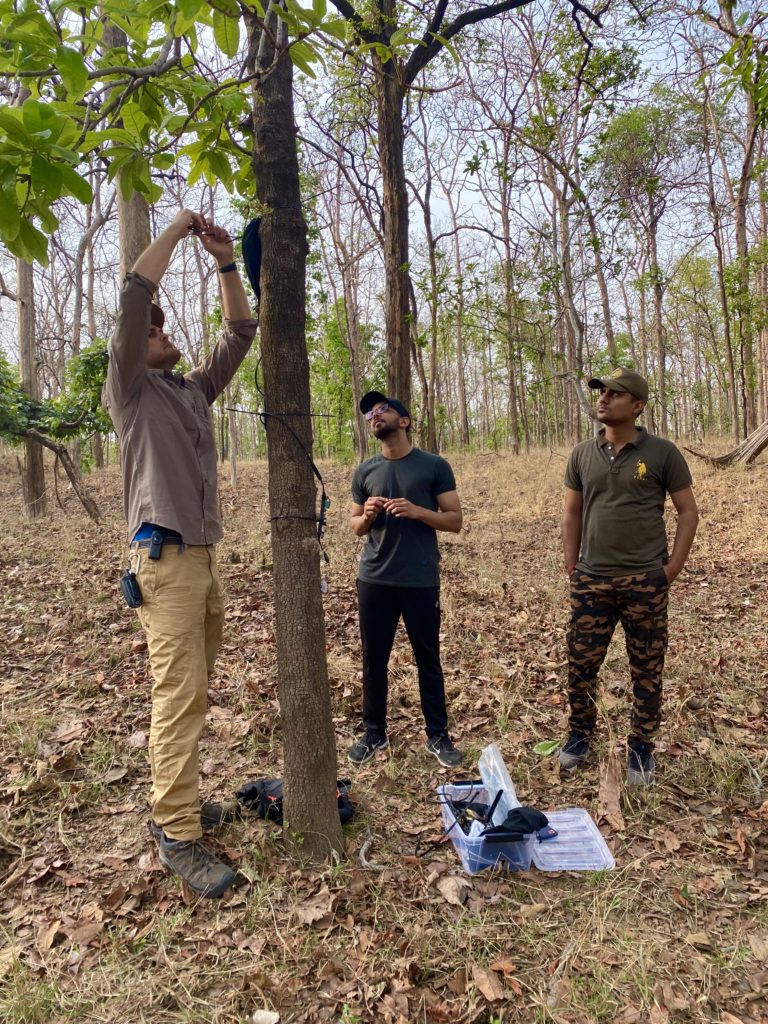
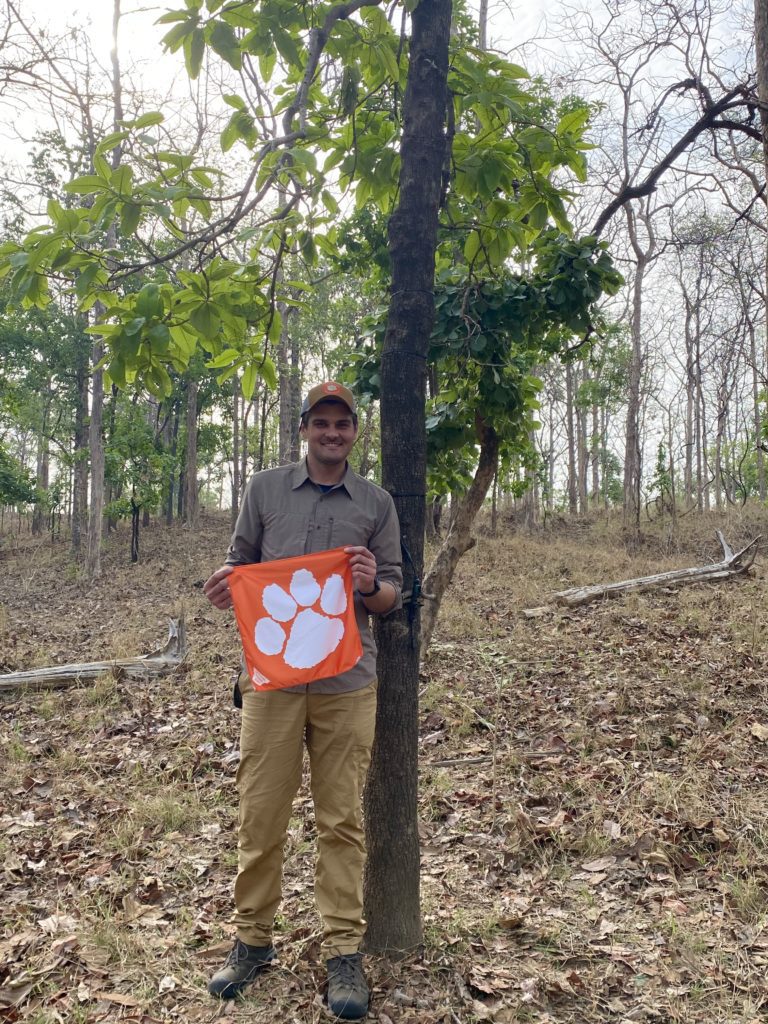
Dertien meets with Indian forestry staff to set up the trail cameras.
Protecting wild tigers involves more than just working with the species itself – the people who live and work near their ranges are integral, too. While the TrailGuard AI team worked near India’s Pench Tiger Reserve, another team of faculty from the University traveled the country this summer to learn from its residents and pursue potential opportunities for students to experience the Indian culture.
Through the Schwehr Family Global Service-Learning Endowment, a delegation comprised of Clemson faculty from political science, women’s leadership, agricultural sciences and conservation, and Indian members from the Global Tiger Forum, Global Tiger Initiative Council and National Tiger Conservation Authority, met to collaborate in India this summer. Through their visits to the Periyar Tiger Reserve and Corbett Tiger Reserve, they determined a great place for student and faculty engagement in India lies at the intersection of tiger conservation and interactions with the people living near these preserved tiger landscapes.
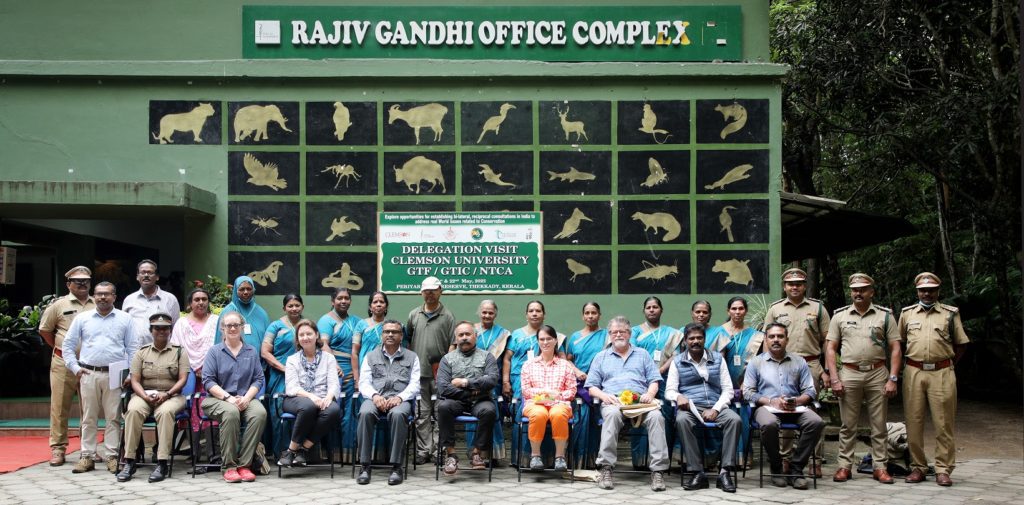
“The village communities are critical advocates and active participants in tiger conservation,” commented Sarah White, Ph.D., a professor of plant and environmental sciences at Clemson. “The passion of community members for the protection of wildlife and plants within the tiger reserves was striking. I want our students to become similarly passionate and use their knowledge collaboratively with those communities to enhance conservation outcomes, especially as related to improving water quality and restoration of native vegetation.”
“Learning about the role of local women’s groups in everything from forest patrols, to pepper and honey production, to waste collection and recycling will help students see how important it is for communities to be partners in conservation and forest management,” noted Diane Perpich, Ph.D., a professor of philosophy and women’s leadership program director at Clemson.
“The 2023 goal is to bring a diverse group of students from women’s leadership, political science and policy, and environmental science to begin to understand the nature of these disciplinary and professional intersection points by visiting and working with the Community Development Committees in and around these national parks,” said Lori Dickes, Ph.D., associate professor, associate chair and graduate programs director in the Department of Political Science.
By fostering these relationships through the Schwehr program, the team also hopes to bring students, faculty and scientists to Clemson from India.
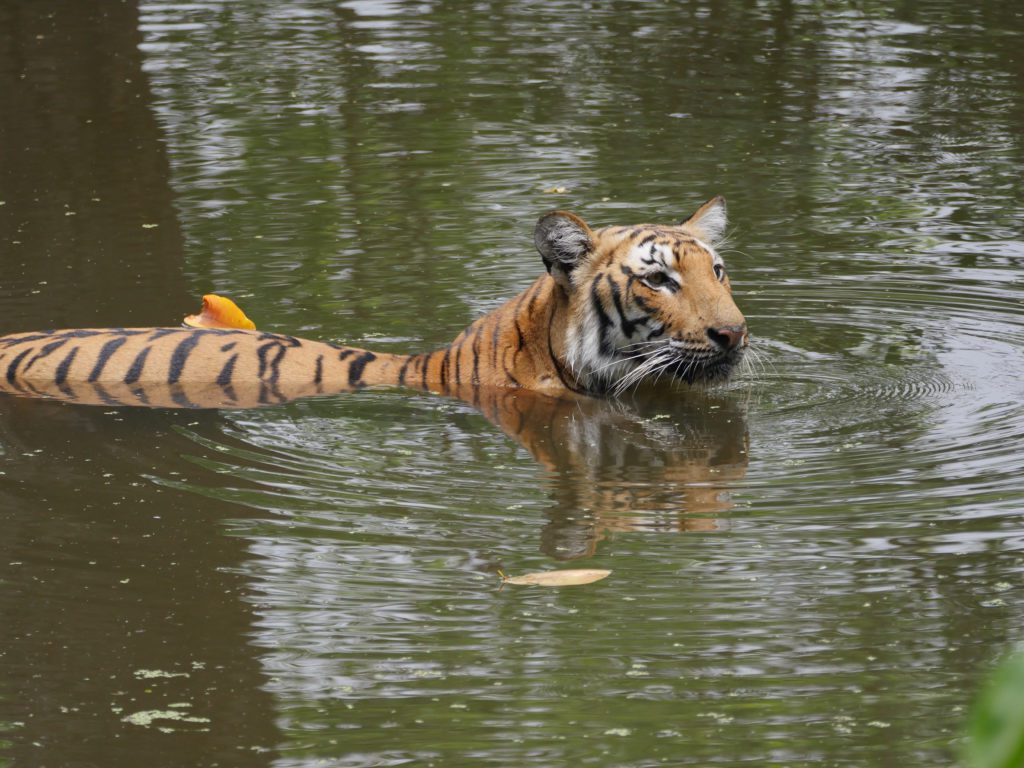
“Seeing a tiger in the wild never ceases to amaze me,” commented Brett Wright, Ph.D., professor and dean emeritus of the College of Behavioral, Social and Health Sciences. “It’s something that I wish every Clemson fan, alumnus and student could see in their lifetime so they wouldn’t take tiger conservation for granted. There are less than 4,000 tigers left in the wild – we could lose this animal in a generation.”
There are less than 4,000 tigers left in the wild – we could lose this animal in a generation.
Wright is director of the Tigers United University Consortium at Clemson, a collaboration between four land-grant, tiger mascot universities – Auburn University, Clemson University, Louisiana State University and the University of Missouri. The consortium was initiated by Clemson University President James P. Clements in 2017, who also serves on the Global Tiger Initiative Council.
The consortium currently supports seven Ph.D. students from the four universities working on research topics ranging from community development in tiger conservation areas to the genetics of captive tigers in the U.S. and more.
“It is thanks to our consortium partners, like the Global Tiger Forum, Indian Forest Service, National Tiger Conservation Authority and others, that we are able to support the important tiger research that these students and their faculty supervisors are pursuing both domestically and abroad,” continued Wright.
Get in touch and we will connect you with the author or another expert.
Or email us at news@clemson.edu

